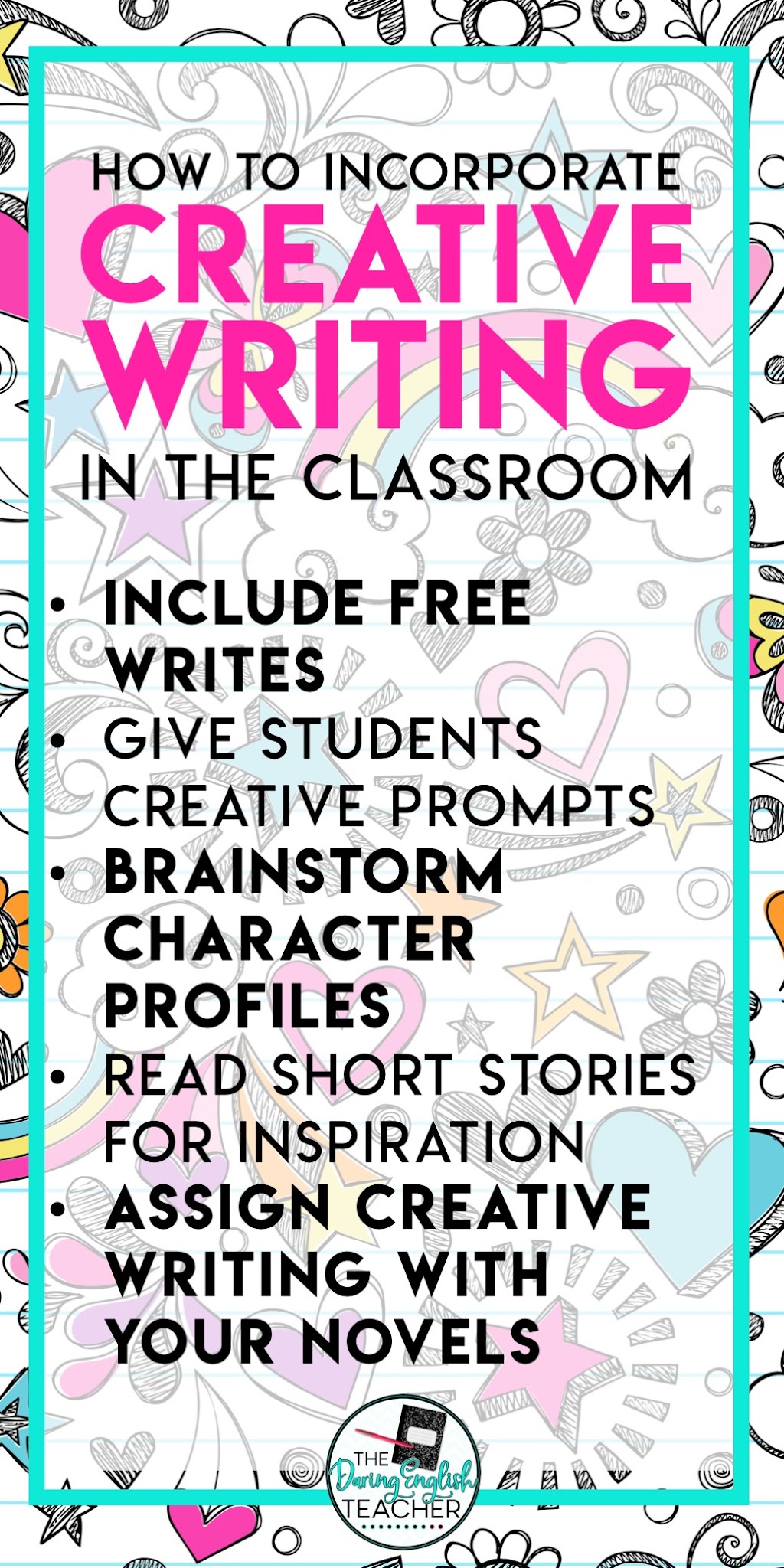Creative writing is an essential aspect of teaching English that teachers should incorporate into the classroom. It is useful for students to know that writing is not always based solely on analysis or explanation, but can be used for expression as well. Here are a few ways in which to include creative writing in your lessons and why this is such a valuable lesson:
1. Take a few minutes every day in class to have your students free write.
Allowing students to express themselves through free writing will give them the confidence to begin writing in more creative ways. Have the students write as creatively as they want to get the creative energy flowing. Free writing is a great tool to get your students practicing their writing.
Free writing will also teach students how to be confident in their thoughts. Since students won’t spend a long time free-writing, they will trust their instincts and feel proud of what they write at the moment. Also, with the experience of free writing, their writing in other essays and assignments will improve due to this increase in confidence.
2. Give your students creative prompts.
Creative prompts will allow students to begin their creative writing journey with a little bit of help. Prompts can also be fun and be engaging in the classroom. Some examples of prompts are: write a scene that begins with the lines, “That night, though I didn’t know it at the time, was the beginning of the end;” write about the moment you were the happiest you have ever been; or write about the biggest mistake you have ever made.
Creative prompts will give students the freedom of creative writing and the benefits of expressing oneself, but will also keep students writing creatively, especially if students have a tough time coming up with prompts themselves. I think when students are well-versed in writing creatively, with assistance from their teachers, they will grow to become stronger writers overall.
3. As a class, brainstorm different character profiles.
With this exercise, students can learn how to create characters that they both like and understand as people. Have students focus on details and traits to make characters both realistic and exciting. This will teach them what makes a good character. What qualities do students appreciate in the characters they read and write about? What are the specific characteristics that students feel are important to know when writing these characters?
Once a student understands what goes into creating a character, he or she will be able to recognize how the different novels you study use these characters to tell the story.
4. Read short stories to give students inspiration for their writing.
While this is not precisely the students writing for practice in creative writing, reading other original works will help to inspire them. Have the students look for moments in the stories that inspire them and annotate where they see different rhetorical and literary devices working, and where things are not working in their own opinion.
Having your students pay attention to what they are reading and what they find works in a creative piece will make them realize their style of writing. Once they know what they like in their writing, their confidence will only increase and their writing, both creative and analytical, will be for the better. Teaching Unit: Intro to Short Stories.
5. Assign creative writing with the novels you read.
When reading different novels in class, there may be parts that are difficult for students to grasp and often you may want to try new ways of teaching them to help with the difficulty. A fun way of changing things up when teaching a novel is to assign a creative writing challenge such as rewriting a specific part of the book. This will give students a chance to write in a way they may have never tried before. Ask them what they would change if they could.
This will again give students the confidence they need to write both creative pieces and essays. Since they will have the power to change an already approved scene in a well-acclaimed novel, they will feel like their opinion matters and that they could write as well as some of the great authors. Reading a novel in class? Try THIS novel resource pack that works with any work of fiction
Writing Resources:
Descriptive Writing
Narrative Writing
QUOTE IT! Adding Dialogue to Narratives




